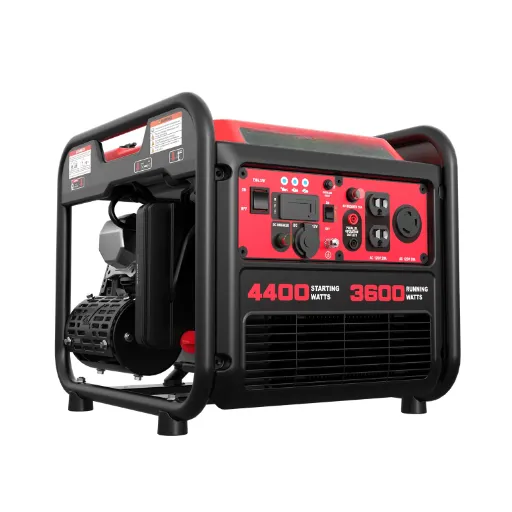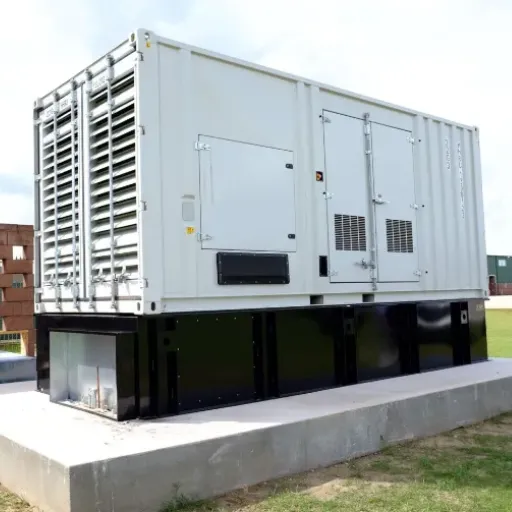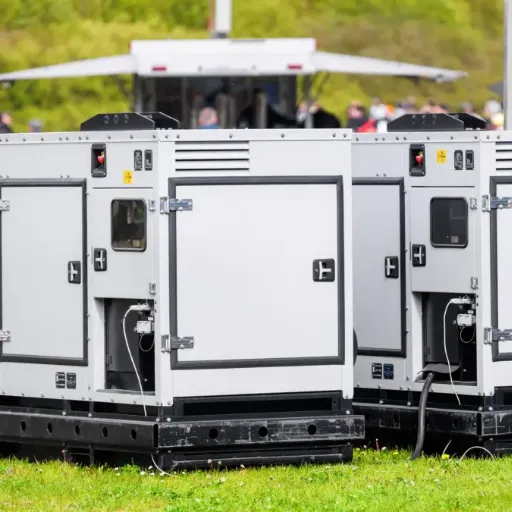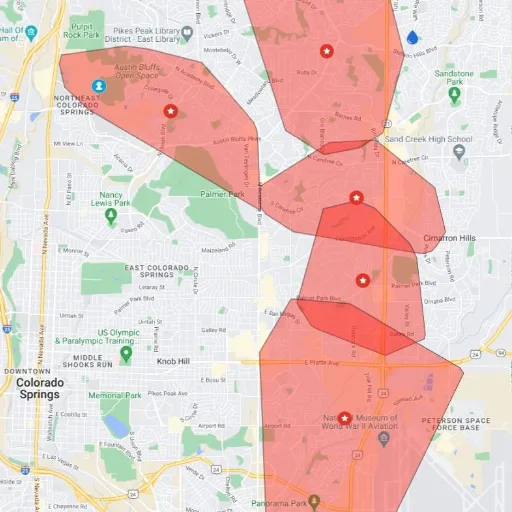In the wake of the most recent outages across the state of Texas, people have begun to examine the inherent weaknesses in the state’s energy infrastructure, which has led to widespread panic among state residents and experts. Since a large majority of the people suffered a blackout and faced unbearable temperatures, the resilience, readiness, and safety of the energy grid of the fifth biggest state in the United States is deeply disturbing. This text is about the reasons behind the failures, the difficulties confronting the Texas energy grid, or the electric power generation sub-sector within the geographical boundaries, and the padding enforced against the instability. It suggests strategies that can be applied to address the shortcomings and challenges affecting the power supply industry. This also explains the importance of a situation that enables one to take the commonly required measures and, at the same time, to implement preventive measures, which avert the state from disruptions.
Overview of Texas Power Outages
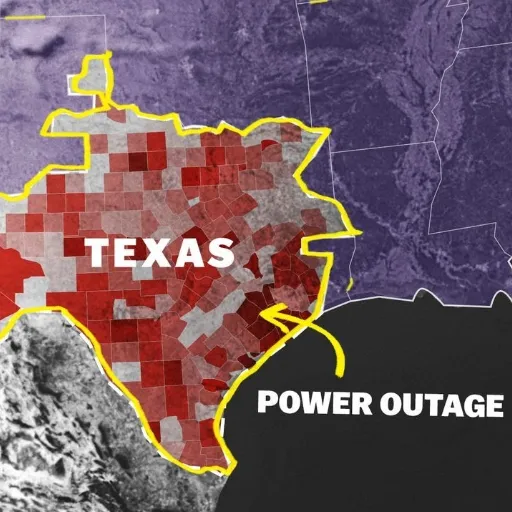
Among other factors, it is worth noting that the recent power outages in Texas were primarily triggered by inclement weather, a gap in the energy infrastructure, and overdependence on liberalized energy. In what was probably the most poignant event of the winter of 2021, the so-called ‘freezing’ of Texas highlighted the numerous weaknesses in the work of the Electric Reliability Council of Texas (ERCOT), which is responsible for managing the state’s power system. Focused issues were the inadequate capacity within the plants to counter the effects of the cold weather, a lack of operating reserves, and a failure to interconnect with neighboring grid operators to import surplus power. These shortcomings led to widespread outages that lasted for several days, affecting a significant portion of the population and compromising the operational integrity of the grid. In similar conditions in the future, this raises many concerns.
What is a Power Outage?
A power outage, also known as a power failure or blackout, can be defined as the loss of electricity in a specific area or region. This can happen because of a number of factors. In hot water conditions, equipment failure, out-of-balance in the grid, all can make a grid extremely hot. As power networks turn into unified installations for electricity distribution, power disruptions in the network may have more extensive effects beyond all connected areas. For example, during those times of high demand and when it becomes extremely hot or cold, more power than the grid can manage typically serves the role of power outages. When the amazing network capacity has been taken out by some weather event or accidental infrastructure damage occurrence, take out the network capacity. New studies have been released on the increase in power failures experienced in the US, with most being attributed to weather-related disasters in the US due to climate change. These instances emphasize that society needs to build more disaster alerts, such as preventative research on weather-based building approaches, upgrading of power grids, and developing electricity systems that can withstand disruptions from natural hazards.
Current State of Power Outages in Texas
Texas has experienced serious problems of power supply interruptions in recent years that go against the growing demand for energy, the climatic conditions and the dilapidated power infrastructure in the state. It is worth mentioning that the February 2021 frost, known as Winter Storm Uri, demonstrated power defects in the sovereign electric system under which power interruptions affected many businesses and residential customers for an extended period and caused a negative economic and human toll. It has been pointed out that the independent power system of Texas, the Electric Reliability Council of Texas, is struggling to provide satisfactory Stability of Service during Extreme Weather Conditions due to a situation where there are limited connections between different power systems and there is not enough winter preparedness to offset very low temperatures. This is the same case as it was mentioned that other categories of disturbances are increasing such as outages due to heat wave, summer periods bear high power loads which may result into failure of the grid, In the course of addressing these challenges, may include an introduction of legislation which is aimed at enhancing grid operations, in areas such as investment in renewables, as well as weatherizing the grids, although more efforts are required in order to make the energy security for Texas sustainable in the long run.
Importance of Checking the Outage Map
It is important to check the status of the power failure areas more frequently so as to understand the challenges prevalent and how they can be addressed. These interactive maps can provide reliable information about the quantum, duration, and areas concerned which means that people and entities can make their decision in a more informed way and in a proper time. In this situation, people can monitor the distribution of additional data on the map of damage and related hazards within the limits of damage and enhance their knowledge on the existing damage, considering it enhanced, so that they are more mentally ready for possible longer sustenance of the prevalent damage in extent and nuisances too. Besides, usually the availability of restoration time and the updates that can come from the responsible body of a given utility at a time contain pages of the outage maps, allowing the public to manage responses collectively without any hasty conclusions and act rightly concerning emergencies.
Causes of Power Outages in Texas
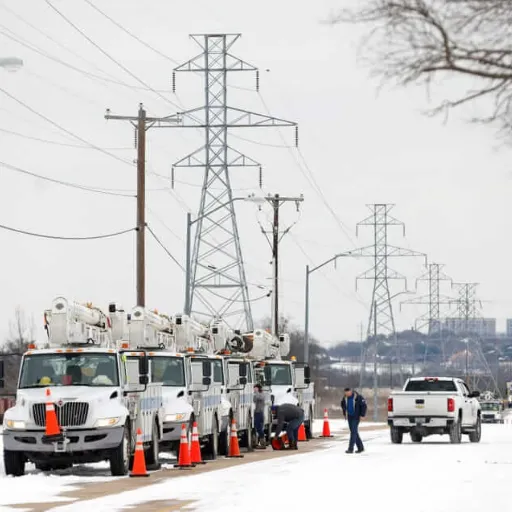
Texas is usually able to prevent the main power outages in residential areas by halting the effects of extreme events such as thunderstorms, tropical cyclones, snowfall, and even high temperatures, causing individuals to rely on air-conditioning temperatures. These can break poles, short-circuit substations, and service transformers, as well as other necessary power requirements, where the power backup is not quick enough. Insufficiency also includes any overcrowded high times in the majority of energy-consuming population between winter and summer, when, in fact, the grid cannot handle the situation anymore. Malfunctioning infrastructures are also a source of help to power loss problems, like not replacing old, worn-out equipment or neglecting maintenance of that equipment more often than is necessary, so that the wear and tear on the equipment decreases faster. Lastly, there are also threats posed by cyber threats to the power grid, which, if not addressed, pose a threat to overburdening energy within a given area or country.
Weather-Related Factors
Weather extremes and the problems they bring along are a factor that contributes to power outages. They include storms, tropical storms, and high temperatures that threaten the stability of the grid. Powerful winds, along with heavy snow, bring down tree branches onto overhead poles, causing interruptions, and snow and ice storms can even weigh down poles or break wires. On the other hand, extreme temperatures increase air conditioning loads and may cause transformers and other electrical equipment to fail due to overheating, thereby eroding the system’s reliability. On the other hand, hydropower generation is likely to be affected because reservoirs will be in less supply and drought conditions will prevail to some extent. Hydropower is also historically one of the major components of the mix of energy in some regions of the land. This is, for an essential (suitable) purpose, the increased occurrences and magnitudes of such extreme weather variations as a result of the changing land use patterns and environmental degradation make grid planning the number one concern for utilities. Measures such as employing storm-resistant materials and infrastructure, burying power lines, and improving prediction tools come in handy to ensure power supply reliability when faced by all these risks.
Infrastructure Issues and Maintenance
Maintaining the infrastructure in good shape is very important as it is an effective way of ensuring that the power supply is steady and efficient, especially when power grid components are growing old and more customers are overusing them. As the statistics show, more than 70% of electrification infrastructure in the United States is over 25 years old, which significantly increases the chances that the equipment will break or there will be interruptions in energy supply. This extends to problems such as the use of outmoded components, rusting, and much lower capabilities than those needed to deal with present electrical loads. To address their challenges, utilities are now taking a step further to integrate new equipment that is fully connected, such as IoT-based monitors, sensors, actuators, and machine learning programs for condition monitoring and fault prediction. For instance, maintenance programs that depend on predictive techniques will enhance maintainability by 50% and extend the life of equipments through the detection of possible failure causes prior to an actual failure. In addition to this, measures that necessitate the replacement or upgrading of infrastructure components at particular times, such as major equipment like transformers and circuit breakers, so as to reduce the associated risks in the infrastructure are also needed.
Impact of Renewable Energy Sources
The energy landscape has recently undergone revolutionary reinvention with the unveiling of renewable energy sources that include solar, wind, and hydropower energy. Both environmental and economic alterations have been seen as a result. This has seen the appreciable utilization of the ever-disputed water. One of the major players in combating climate change is at home, as the efforts to contain the menace through initiatives such as the Paris Agreement, is the total amount of greenhouse gas that is being released as a result of human beings nowadays. As indicated by the increasing capacity factors of the installed onshore wind energy systems, which exceed 35 percent, there is a compelling reason to consider them as an alternative to fossil fuel power plants. This is also due to the sun. The levelized cost of photovoltaic solar (PV) technology is expected to fall further, as it has already reached $ 0.05 per kilowatt-hour in many parts of several countries.
Renewable energy can lead to a more diversified grid, which, in the long run, can help prevent total reliance on one source and further aid in cushioning against supply distances. But the flip side is that other renewables—especially wind and solar—can be spiky and thus require additional investments in battery energy storage systems (BESS). The measures, such as the deployment of new grid architecture and transitional energy balancing equipment, offer significant potential for advancing renewable energy and provide leverage towards the utilization of non-fossil energy sources. In other words, the above are the aims in aiming for effective use of energy sources for the environment without any serious consideration of such energy as unimportant.
Effects of Power Outages on Residents
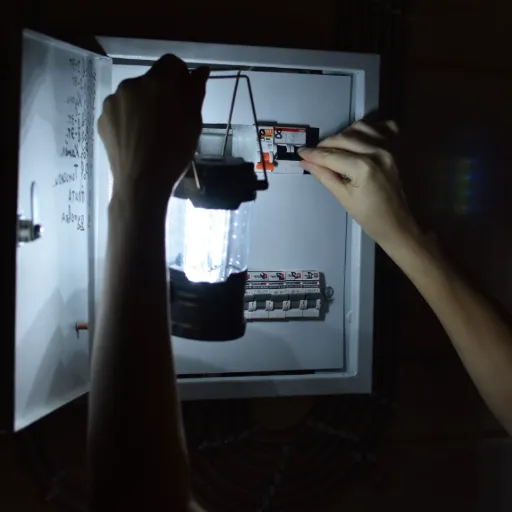
Blackouts can land heavily on ordinary citizens, causing a disruption to their schedule and hence a decrease in their well-being. Essential services, including lighting, as well as heating and cooling systems, are no longer accessible, which could cause Kinesthetic illusions and eye disorders in normal people, increasing their discomfort and infectious risk, especially in more vulnerable groups like the elderly who might be suffering from disease. Food, bed, and other supplies are a significant and recurring distress since in-house appliances such as fridges and freezers are always the first to be affected, and these matters have financial consequences. Additionally, there are always chances that the lack of power could make it difficult to communicate and place people in danger, while the solution is already at hand. The situation is not any better with conditions that persist longer – they bring about one’s emotional tension, or in mild terms, anxiety, more so when this occurs occasionally or even to the extent of lacking predictability.
Impact on Daily Life and Routine
Power outages are particularly important since they tend to halt various normal activities at both the individual and the collective level. The public transportation system is one such activity that is often hampered during a shutdown because it results in considerable delays and hampers urban commuting, especially in cities. Also at home, basic requirements are often electricity dependent for activities like cooking, rendering homes light and warm; making it hard for consumers to use appliances without electricity. Population data reveals that during the times of the last large-scale power grid failure, there is a hike in the sales of generators and a greater inclination to use other forms of energy, but not for every suchadinari’s utility or factory buildings, the luxury of those investments is not available. In addition, it automatically means that the institutions of learning experience electronic complications to the extent necessitated by the enhanced reliance on electronics for learning. These and other such issues cry out loud about the paramount importance of electricity for the community to continue and to be stable in general.
Economic Consequences for Texas Residents
There are broad and complex economic implications for Texas citizens during blackouts. For instance, one of the most immediate effects relates to personal financial matters, as people will need to use various forms of energy for which they are likely to incur considerable costs. For instance, people may purchase or rent generators, or move into a ship cabin or a beach hut, fearing the worsening weather. Businesses in every corner, especially the SME sector, face continued operational disruptions as a result of loss of business, input supply decapitation, and shrinkage of output. In cases of some industries such as the production of goods and food services even do not have temporary options to continue working because there is always a necessity for electric power supply as a component to the production proces,s and such cases are compensated in terms of very high financial loss by example, damage to machinery, contaminated products, and, a decrease in output. Furthermore, pricing hoarding set by high energy tariffs in the aftermath of such blackouts spurs energy prices, which make households’ lives even more expensive. All of these cumulative economic distresses are a threat not only to the well-being of an individual but also to the macroeconomic stability of the regions affected.
Health and Safety Risks
Long power deficits create significant concerns for both wellness and safety. They can be especially problematic for those who are more likely to be affected, such as older people, sick people, and children. If an individual requires electronic medical devices such as ventilators or dialysis equipment that need power and electrical appliances, their health is at risk if the supply is not constant. This is because the devices get overheated and break in the process. Moreover, it is customary for extremities, including heating or air conditioning systems, to be turned off during extreme weather conditions, which can ultimately lead to overheating situations with health implications. There is also the issue of challenges as a result of defective infrastructure,s leading to losing time in conveying relevant responses during occurrences of accidents and health issues. Not frequently, but also not rare, there may be emergency services, but the interventions that keep people safe may not be executed in time. People are aware of long-term concerns, because food can decompose easily. In addition, the use of any source of power that is not normally used for powering up devices, like gas-powered generators, has become common, with an increase in carbon monoxide poisoning. This is in reference to cases in which the fumes evolved from the combustion of gas produced by the generator are not channeled out in a way that people can inhale them. That is why the many risks pinpoint the impracticality of systems that do not have alternate backup systems, including power recovery schemes.
How to Prepare for Power Outages
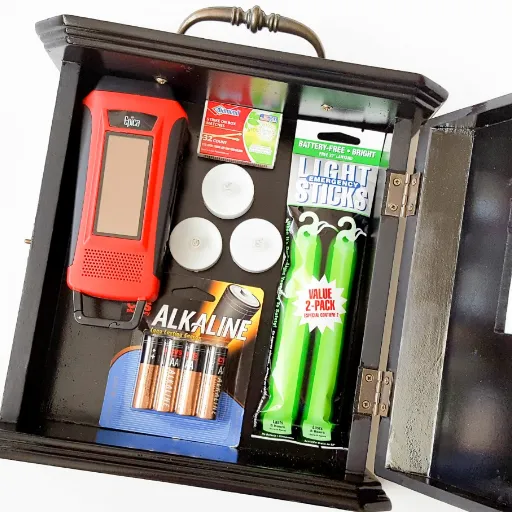
Essential Preparation Steps
- Create an Emergency Kit: Create a bundle of easy-to-reach items: for instance, torches, batteries, water, basic perishable food, a first aid kit with obligatory medications. Buy a conventional or solar-powered radio to get weather forecasts along with instructions in case of an emergency.
- Develop a Communication Plan: Plan in advance how the household will communicate during power outages. Ensure that mobile phones are charged and look into acquiring backup power sources, such as a simple portable power pack.
- Plan for Medical Needs: If anyone at your location relies on medical appliances that require power to function, provide a backup power system in case of an emergency, or identify nearby hospitals and medical facilities equipped with backup power.
- Secure Backup Power Solutions: Get a generator if your resources allow it, please. Abide by safety measures also to prevent any accidents- e.g., placing the generator outdoors to avoid carbon monoxide poisoning.
- Protect Electronics: Utilize power strips with individual sockets to protect gadgets, appliances, and electrical equipment from getting damaged due to voltage fluctuations and pulling out electrical plugs when there is lightning and thunderstorms to eliminate the likelihood of getting damaged due to excessive current.
- Stay Updated: To keep you informed and on the safe side as much as possible, she checks the weather in the nearest forecast points on the map and follows news about the formation of dangerous situations at the facilities of utility specialists. You can also register with the local authorities or your social networks for alerts and warnings in case of power distribution interruptions.
Emergency Kits and Supplies
Being prepared for an emergency is crucial in managing power blackouts and unprepared circumstances. This includes the aspects of emergency planning, as it helps in addressing power outages in a proper manner. The emergency kit should contain the important items listed below:
Non-Perishable Food and Water
Sufficient non-refrigerated foods to feed every member of the family for a period of three days. And the rule of thumb is one gallon of water per person per day. Take the necessary measures to store these goods in such a way that maintains their shelf life.
Portable Power Sources
Make certain that you have power banks or portable chargers that are fully charged for powering phones and turned off during power cutoffs or flashlight use. Solar power chargers may be used as another option in such circumstances, which may be helpful.
First Aid Supplies
Ensure that the medic provisions come fitted with necessary medical supplies like bandages, dressings, antiseptic wipes, plaster, painballs, and latex gloves. It counts participants’ numbers first using this method, and continues to distribute to specific conditions or equipment that participants individually focus on.
Lighting and Communication
You can purchase separate LED lights from the rechargeable ones to ensure power redundancy. For people who lack torches and are out in the dark due to a power outage, the radio will enable them to hear the news broadcast even when the television transmission has been interrupted.
Personal Hygiene and Sanitation
Packs of moist towelettes, garbage bags, and other portable sanitation supplies will come in handy when the water supply isn’t working. Access to washrooms may be impossible, and in such circumstances, ideal hygiene packages/ products ensuring those scenarios are met should be arranged and catered for.
Clothing and Essentials
To stay ahead of the weather, cram in some wraps, fabric tosses, and comfortable shoes. Also, remember to pack the essentials like prescription drugs and a backup pair of glasses.
Important Documents
Brace for all natural calamities and keep these documents safe all the time, when you do so the record will not get spoilt and in case of any need the records are accessible.
This toolkit should be used in conjunction with mechanisms to keep its content up-to-date, ensuring a high level of preparedness for such contingencies. Finally, take time to reassess the contents of the kit, in order to revive the changing situation and demands.
Staying Informed with Outage Maps
The essence of outage maps is very salient due to the fact that they play an essential role in monitoring and understanding the state of power outages at any particular moment. It includes widgets with detailed pictures of the number of outages, probable restoration time, and news from those supplying the services that are turned off. When it comes to these resources, utilizing outage maps and the most advanced technologies enables people to combine information, which allows for better planning and any other necessary actions. One strength is that providers of such services usually offer work maps, including the affected areas, which assist clients in understanding the potential consequences on their homes and offices. It is justifiably logical because being updated on these means of communication allows for a quick decision making and fortified preparedness in times of long periods of power disruption.
Future Solutions for Texas Power Reliability
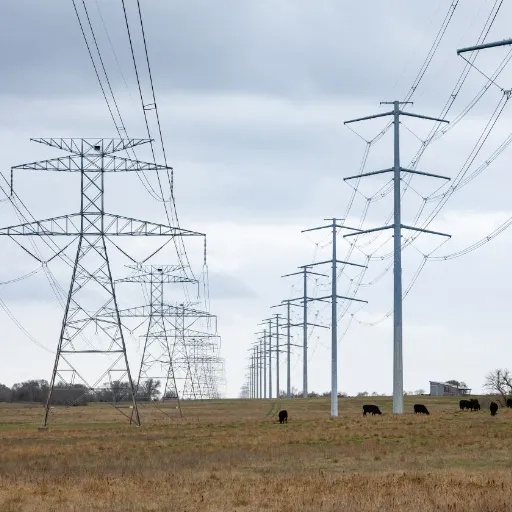
One effective way to improve the reliability of Texas’s electric power system is to harness renewable energy resources. Increasing the solar and wind energy quota provides a sort of standby supply and alleviates the power glut during peak periods. Moreover, the production of innovative energy storage systems, such as large batteries, has been another strategy: it enables the excess power to be stored and used as extra energy in the event of an emergency or for use during heightened demand periods.
Another area of interest is enhancing the grid infrastructure. Enhancement of transmission lines, introduction of smart grid technologies, and compliance with weatherization requirements are effective measures of risk reduction during bad weather conditions such as hurricanes and storms. Policy and energy companies’ interactions to develop the appropriate laws and ensure that the state’s energy grid is adequately protected and maintained are important.
Finally, the introduction of distributed energy sources, such as rooftop solar panels in buildings and even small-scale power distribution systems operating at the level of neighborhoods, will allow safe provision of energy without the grid. Energy efficiency programs and demand management will also help to provide power for Texas residents in the most optimal and sustainable way.
Investment in Infrastructure Improvements
Improving Texas energy infrastructure is one of the activities undertaken to protect the Texas power grid against future disturbances. Transmission and distribution systems were improved and replaced with new functional ones, the systems that are able to carry greater amounts of energy. Latest information from the available sources exhibited that the use of sophisticated grid applications, such as online fault identification and enforcement for causes of breakdowns, is a development that has been made. Equally significant is the extension of high-voltage lines, especially high-voltage direct current (HVDC) lines, to support energy transmission over long distances; therefore, it assists in the inclusion of energy contributed to the grid by sources that are far away.
When making investments, it should be stressed that the grid needs hardening works from the side of weather changes, such as high winds, cold, and flooding. Put another way, the expense of maintaining destroyed infrastructure, specifically in the form of level substations, jointings, and rubber-grommeted steel and fibre-optic cables, increases its immunity to catastrophe. Public-private partnerships are likely to play a vital role in ensuring that any such amenities are established with the least burden on local taxpayers. Defeat reactive post-storm or a surge in demand, heating up capital, and realization imposed on ratepayers by drawing severe storms will not occur. Technological advances do not exclude the use of efficient engineering designs, which aim at making Texas capable of meeting its energy needs today and in the future on a more sustainable basis.
The Role of Solar Energy in Reducing Outages
By permitting every individual who wishes to integrate electricity in homes or businesses to avoid the prohibitive centralized power structure. Set-ups such as solar panels put on apartments and community buildings function independently and without overwhelming the main apparatus during high peaks and emergency situations. In addition to the improvement in security brought about by batteries, solar technology has helped in harnessing any extra power that is produced and uses it during power outages without any need for solar energy. Texas has also witnessed vast improvements in the capacities and applications of solar energy over the past ten years, surpassing other forms of clean energy in terms of electricity production. It has also increased solar power usage in the state this century to reach impressive levels. However, as quoted from recent Energy Reports, it was observed that, even with regard to areas with soaring solar absorption, many programs have notably lessened the regularity of outages as well as their respective durations. Provided that solar technology, already being considered as one of the best solutions, is used on a bigger scale, climate mitigation will improve in the State, and nonrenewable energy will account for less of the energy mix of the state.
Reference Sources
-
The 2021 Texas Power Crisis: Distribution, Duration, and Impact
- Key Findings: This study analyzed individual-level survey data from 1,038 respondents. It found that Black respondents were disproportionately affected, with a higher likelihood of experiencing outages lasting over 24 hours.
-
Exploring the Impact of Winter Storm Uri on Power Outage
- Key Findings: This research examined the effects of Winter Storm Uri, which caused record-setting cold temperatures in February 2021. The storm led to widespread power outages and disruptions in public water systems, emphasizing the vulnerabilities in Texas’s infrastructure.
Frequently Asked Questions (FAQs)
Q: How can I find the power outage map for my area in Texas?
A: If you are currently residing in Texas and are experiencing an electricity outage, you have the right to. It would do you well to go through the websites of the local electricity suppliers, such as Oncor, or any other such company that provides services in your country. Real-time data on existing electricity outages can thus be assessed through maps. Moreover, several service providers also offer mobile applications that help you track the progress of the ongoing outages. Coverage areas wind up, local news borrowing routine, generally sheds light on widespread prevailing outages in such times.
Q: What should I do during a Texas power outage?
A: In case of a power outage in Texas, it is advised to remain calm and practice safety best practices. The first and immediate recourse would be to look at the map indicating the blackout reach in order to establish the magnitude of the cutoff. It goes without saying, but turn off all the electronic gadgets and other appliances so as to avoid any form of harm that might be caused once the power is restored. If the electricity cut is prolonged, ensure you use torches instead of candles to minimize the risks of fires. Also, keep your fridge and freezer doors closed to preserve food.
Q: How do electricity rates change after a power outage in Texas?
A: Electricity rates in Texas vary based on economic conditions and may rise after an electrical blackout. Blackouts, particularly during peak demand, can also threaten the electricity supply and consequently increase the rates involved. Such electricity rate adjustments are enacted periodically by market players to control demand or recoup expenses incurred during the restoration of electricity services. It is strongly recommended to review the fine print of your electricity provider’s contract or any letters you receive regarding rate changes. In this way, you are better adjusted to use energy efficiently, as well as your provider.
Q: How can I report a power outage to my provider in Texas?
A: In the state of Texas, people find it easy to handle a situation where there is no power because most electric companies for example Oncor, offer several options for the clients to report outages promptly. First is the official numbers that can be called, second is the dedicated site, and third is an app that works for both iOS and Android operating systems. It is crucial to present the address when reporting a power outage and any other information that can be useful, hence gain during the duration of the power loss, and even some breakages on electrical materials that can be seen. In most cases, service centers also have customer care representatives who will do the follow-up regarding the same.



